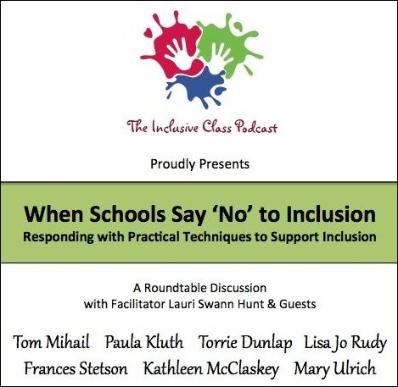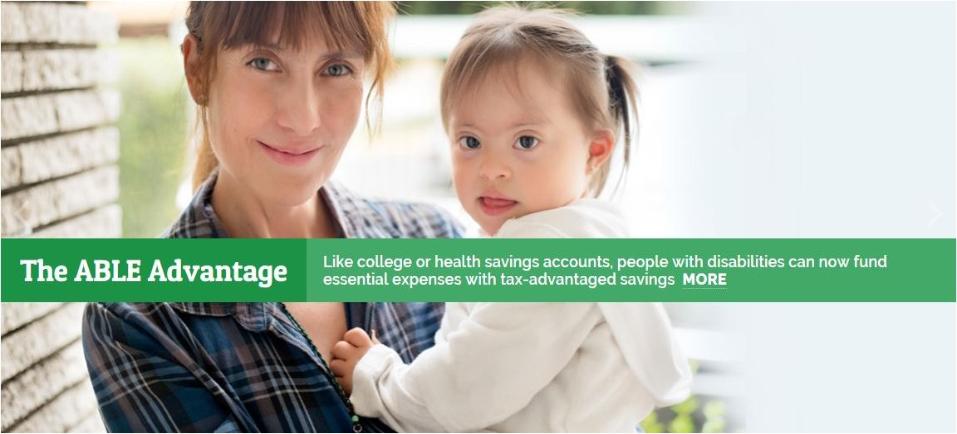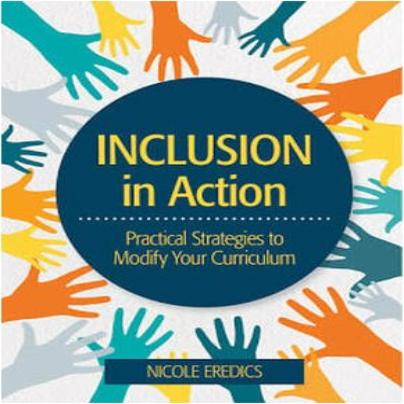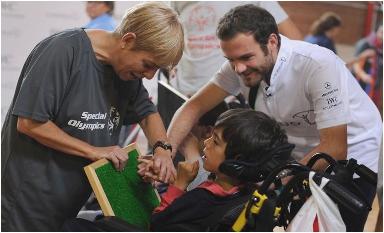| MYTHS AND FACTS ABOUT SUPPORTED INCLUSIVE EDUCATION |


When it's done correctly, supported inclusive education enriches the quality of education. Research has consistently documented
the benefits for all students. Denying diversity diminishes the lives of students with and without disabilities.
the benefits for all students. Denying diversity diminishes the lives of students with and without disabilities.
| "Inclusion jeopardizes the education of the 'other' students." |



| When it was passed in 1975, what is now the Individuals with Disabilities Education Improvement Act became the most sweeping legislation in the history of United States education. No law, before or since, did more to change the landscape of our schools. Forty-six years ago, there was a virtual system of educational apartheid. Today, 94.7% of students with disabilities, ages 6-21, attend local neighborhood schools, spending part or all of the day in a general education setting. Most (62.6%) are included in "regular" classrooms for 80-100% of the school day. |

| MYTH 1 |
| FACTS |
| MYTH 2 |
| "Full inclusion (placing all students with disabilities in general education regardless of the nature or severity of their disabilities) is mandated by federal law." |
Far from mandating full inclusion, federal law mandates placement in the least restrictive (least segregated) environment that is
most appropriate for all students on a case-by-case basis, requiring schools to make available six placement alternatives (full
continuum of services). Only two of these options - a regular class with support services and a regular class with resource room
support - directly involve general settings. Most students are integrated; some require more intensive intervention in separate
classes, special schools, residential facilities, and home or hospital environments.
most appropriate for all students on a case-by-case basis, requiring schools to make available six placement alternatives (full
continuum of services). Only two of these options - a regular class with support services and a regular class with resource room
support - directly involve general settings. Most students are integrated; some require more intensive intervention in separate
classes, special schools, residential facilities, and home or hospital environments.
| FACTS |

| MYTH 3 |
| "Segregating students with disabilities has been effective." ("If it's not broken, why fix it?") |
| FACTS |
The outcomes of systematic, segregated special education are unacceptable: denial of civil rights, learned helplessness, social
distancing, and diminished quality of life. Adults with disabilities are the least employed, poorest, least educated, most excluded
of all Americans. Five decades of research demonstrated the benefits of integration. Consistent with the 1954 Supreme Court
ruling, Brown v. Board of Education, "separate is not equal."
distancing, and diminished quality of life. Adults with disabilities are the least employed, poorest, least educated, most excluded
of all Americans. Five decades of research demonstrated the benefits of integration. Consistent with the 1954 Supreme Court
ruling, Brown v. Board of Education, "separate is not equal."
| MYTH 4 |
| "The cost of including students with special needs is prohibitive. We can't afford it." |
Schools recognized for successfully achieving supported inclusive education are (1) saving money (segregation is expensive),
(2) spending the same amount as when serving students separately, or (3) reporting national average increases of 3%.
Segregated schools and classes are far more expensive than providing quality support services.
(2) spending the same amount as when serving students separately, or (3) reporting national average increases of 3%.
Segregated schools and classes are far more expensive than providing quality support services.
| FACTS |
| MYTH 5 |
| "I'm sorry, but they have nothing to do with me." (The "THEM" and "US" mindset.) |
| FACTS |
This is about all of us. We all become disabled due to aging, unless we die first. Any one of us may become severely disabled
due to injury or illness. This is the one minority group we all get to join. What we do to improve quality of life for people with
disabilities, we do for ourselves.
due to injury or illness. This is the one minority group we all get to join. What we do to improve quality of life for people with
disabilities, we do for ourselves.
| MYTH 6 |
| "Inclusion is another educational fad. The pendulum will swing back to segregated education." |
| FACTS |
A return to completely segregated special education would take the repeal of two constitutional amendments (5th and 14th), the
repeal of nearly 40 years of legislation, and overturning nearly 50 years of litigation. This "fad" has been present for 40 years.
repeal of nearly 40 years of legislation, and overturning nearly 50 years of litigation. This "fad" has been present for 40 years.
| MYTH 7 |
| "People with disabilities are an unfortunate drain on society." |
Considering the ways society limits the lives of people with disabilities, it's the other way around: society is a drain on people
with disabilities. Significant contributions made by people with special needs to our communities are well documented.
with disabilities. Significant contributions made by people with special needs to our communities are well documented.
| FACTS |
| MYTH 8 |
| "Don't go into special education. It's being phased out because of inclusion." |
The number of segregated settings for students with special needs has decreased, not special education. There is a worldwide,
nationwide shortage of special educators. The Bureau of Labor Statistics reports 20,000 new special education a year (53%
growth). Between 2008 and 2018, the number of special educators is expected to increase by 17%, "faster than the average for
all occupations" (Occupational Outlook Handbook). Because of inclusion, we need more special educators than ever.
nationwide shortage of special educators. The Bureau of Labor Statistics reports 20,000 new special education a year (53%
growth). Between 2008 and 2018, the number of special educators is expected to increase by 17%, "faster than the average for
all occupations" (Occupational Outlook Handbook). Because of inclusion, we need more special educators than ever.
| FACTS |
| Inclusion Resources |
| Yellow Pages for Kids User Guide teaches parents how to be more effective advocates. Learn how to build your team, get educated about your child's disability, find special education advocacy training, locate a parent group, and get legal and advocacy help. Resources include consultants and support groups. |
| THE BENEFITS OF SUPPORTED INCLUSIVE EDUCATION |
| GENERAL BENEFITS FOR QUALITY EDUCATION |
+ learning about and celebrating diversity
+ special educators work directly with all students
+ improved communication with parents and other family members
+ accommodations, adaptations, modifications, and differentiated instruction benefit all teachers and learners
+ teachers who work together solve more problems than when they work alone
+ students with learning/behavior problems who are not eligible for special education benefit from support
+ collaboration among all stakeholders
+ school-wide, district-wide focus on improved instruction
+ special educators work directly with all students
+ improved communication with parents and other family members
+ accommodations, adaptations, modifications, and differentiated instruction benefit all teachers and learners
+ teachers who work together solve more problems than when they work alone
+ students with learning/behavior problems who are not eligible for special education benefit from support
+ collaboration among all stakeholders
+ school-wide, district-wide focus on improved instruction
| BENEFITS FOR STUDENTS WITH SPECIAL NEEDS |
+ new friendships
+ preparation for the "real world"
+ access to academics and extracurricular activities through universal design for learning
+ normalization
+ modeling
+ improved social and academic development
+ development of positive self-concept, independence, and self-advocacy skills
+ social acceptance
+ improved emotional development
+ increased number of individualized education program goals are met in integrated settings
+ access to peer tutoring
+ being a peer tutor
+ increased motivation
+ experiencing diversity
+ meeting community expectations
+ greater success as adults
+ preparation for the "real world"
+ access to academics and extracurricular activities through universal design for learning
+ normalization
+ modeling
+ improved social and academic development
+ development of positive self-concept, independence, and self-advocacy skills
+ social acceptance
+ improved emotional development
+ increased number of individualized education program goals are met in integrated settings
+ access to peer tutoring
+ being a peer tutor
+ increased motivation
+ experiencing diversity
+ meeting community expectations
+ greater success as adults
| BENEFITS FOR STUDENTS WHO ARE DEVELOPING TYPICALLY |
+ new friendships
+ realistic view of the "real world"
+ learning that diversity exists and can be positive
+ understanding and appreciating individual differences
+ learning how to accept and deal with the disabilities likely to be faced by family/friends/self later in life
+ more positive attitudes and interactions with others
+ development of positive self-concept, independence, and self-advocacy skills
+ opportunities for leadership as peer tutors, cooperative learners, and models
+ opportunities to be tutored by peers with special needs
+ interaction with special educators and other service providers
+ engaging with enriching instructional methods/activities/materials/technology
+ improved performance resulting from universal design for learning
+ lower teacher-learner ratios or class size
+ improved academic performance in the classroom
+ improved performance on standardized test scores
+ learning about empathy, compassion, and supporting others
+ greater success as adults
+ realistic view of the "real world"
+ learning that diversity exists and can be positive
+ understanding and appreciating individual differences
+ learning how to accept and deal with the disabilities likely to be faced by family/friends/self later in life
+ more positive attitudes and interactions with others
+ development of positive self-concept, independence, and self-advocacy skills
+ opportunities for leadership as peer tutors, cooperative learners, and models
+ opportunities to be tutored by peers with special needs
+ interaction with special educators and other service providers
+ engaging with enriching instructional methods/activities/materials/technology
+ improved performance resulting from universal design for learning
+ lower teacher-learner ratios or class size
+ improved academic performance in the classroom
+ improved performance on standardized test scores
+ learning about empathy, compassion, and supporting others
+ greater success as adults
| BENEFITS FOR GENERAL EDUCATION TEACHERS |
+ new friendships
+ partnerships with special educators, therapists, and other service providers
+ support systems (supplementary aids and services)
+ inservice programs and consultation helpful to all learners
+ improved teaching skills
+ new perspectives on teaching and learning
+ becoming skilled at differentiated instruction for all learners
+ sharing and learning techniques and materials
+ special education assistance with students who are developing typically
+ sense of accomplishment in supporting all students to achieve their potential
+ improved collaboration skills
+ co-teaching support
+ effective use of resources
+ family involvement
+ university involvement through research and practica support
+ federal and state funding of supported inclusive education
+ engagement with support organizations
+ supporting civil rights
+ partnerships with special educators, therapists, and other service providers
+ support systems (supplementary aids and services)
+ inservice programs and consultation helpful to all learners
+ improved teaching skills
+ new perspectives on teaching and learning
+ becoming skilled at differentiated instruction for all learners
+ sharing and learning techniques and materials
+ special education assistance with students who are developing typically
+ sense of accomplishment in supporting all students to achieve their potential
+ improved collaboration skills
+ co-teaching support
+ effective use of resources
+ family involvement
+ university involvement through research and practica support
+ federal and state funding of supported inclusive education
+ engagement with support organizations
+ supporting civil rights
| BENEFITS FOR SPECIAL EDUCATION TEACHERS |
+ new friendships
+ partnerships with general educators
+ serving more students
+ focusing on special learning needs rather than duplicating efforts of the general education classroom
+ new perspectives on teaching and learning
+ sharing and learning methods and materials
+ becoming an integral part of the general education community
+ improved collaboration skills
+ co-teaching support
+ effective use of resources
+ family involvement
+ supporting civil rights
+ partnerships with general educators
+ serving more students
+ focusing on special learning needs rather than duplicating efforts of the general education classroom
+ new perspectives on teaching and learning
+ sharing and learning methods and materials
+ becoming an integral part of the general education community
+ improved collaboration skills
+ co-teaching support
+ effective use of resources
+ family involvement
+ supporting civil rights
| BENEFITS FOR ALL FAMILIES |
+ new friendships
+ partnerships with general educators, special educators, and other service providers
+ enrichment that comes from diversity
+ improved quality of education
+ increased hope for their sons' and daughters' development and success
+ enjoying the benefits listed above for their sons and daughters with and without special needs
+ supporting civil rights
+ partnerships with general educators, special educators, and other service providers
+ enrichment that comes from diversity
+ improved quality of education
+ increased hope for their sons' and daughters' development and success
+ enjoying the benefits listed above for their sons and daughters with and without special needs
+ supporting civil rights



| LEAST RESTRICTIVE ENVIRONMENT (LRE) |
| "To the maximum extent appropriate, children with disabilities, including children in public and private institutions or other care facilities, are educated with children who are not disabled, and that special classes, separate schooling, or other removal of children with disabilities from the regular educational environment occur only when the nature or severity of the disabilities is such that education in regular classes with the use of supplementary aids and services cannot be achieved satisfactorily." |
| Individuals with Disabilities Education Act (IDEA) Public Laws 94-142 (1975), 101-476 (1990), 105-17 (1997), 108-446 (2004) |
| SEGREGATION |
In IDEA, the term "restrictive" is synonymous with the word "segregated." Education in the most appropriate, least segregated
environment is the intent of the law. Segregation of most learners with disabilities is restrictive because, as a group, students
with disabilities who are integrated perform significantly better and achieve more than their peers with disabilities who are taught
separately.
environment is the intent of the law. Segregation of most learners with disabilities is restrictive because, as a group, students
with disabilities who are integrated perform significantly better and achieve more than their peers with disabilities who are taught
separately.
| INTERPRETATION OF LRE |
Students with disabilities should be placed in the most normal educational settings possible that are appropriate to their needs
and the needs of peers who are developing typically. Support services are the key to successful supported inclusive education.
and the needs of peers who are developing typically. Support services are the key to successful supported inclusive education.
| EXAMPLES OF SUPPORT SERVICES |
Supplementary aids and services include (but are not limited to):
+ administrative vision, leadership, and direction
+ consultation services for general education teachers
+ inservice programs for all service providers
+ information programs for families of students with and without disabilities
+ information programs and activities for students with and without special needs
+ special educators in general education classes as co-teachers
+ counselors
+ speech/language pathologists
+ physical therapists
+ occupational therapists
+ social workers
+ paraprofessionals
+ tutors
+ resource rooms
+ technology
+ adaptive, assistive equipment
+ universal design for learning
+ peer buddies
+ peer tutoring
+ cooperative learning
+ teacher and student assistance teams
+ collaboration among service providers and families
+ family involvement
+ parent support groups
+ enrichment activities and materials for all students
+ mentoring for students, families, and educators
+ involvement by professional support organizations
+ university involvement, practica, and research support
+ federal and state funding of "best practices"
+ administrative vision, leadership, and direction
+ consultation services for general education teachers
+ inservice programs for all service providers
+ information programs for families of students with and without disabilities
+ information programs and activities for students with and without special needs
+ special educators in general education classes as co-teachers
+ counselors
+ speech/language pathologists
+ physical therapists
+ occupational therapists
+ social workers
+ paraprofessionals
+ tutors
+ resource rooms
+ technology
+ adaptive, assistive equipment
+ universal design for learning
+ peer buddies
+ peer tutoring
+ cooperative learning
+ teacher and student assistance teams
+ collaboration among service providers and families
+ family involvement
+ parent support groups
+ enrichment activities and materials for all students
+ mentoring for students, families, and educators
+ involvement by professional support organizations
+ university involvement, practica, and research support
+ federal and state funding of "best practices"
| Tom Mihail, Ph.D., Professor Emeritus (2021) |
Research conclusively demonstrates supported inclusive education is favored by most
stakeholders: students with special needs, students who are developing typically,
parents of students with disabilities, parents of students who are not disabled, general
education teachers, special educators, other direct service providers, and educational
administrators.
Yet, misconceptions remain a threat to understanding the least restrictive environment
provision of the law. Myths develop because they sound intuitively correct and support
stereotypical thinking. The facts, however, are clearly supported by educational
research evidence.
stakeholders: students with special needs, students who are developing typically,
parents of students with disabilities, parents of students who are not disabled, general
education teachers, special educators, other direct service providers, and educational
administrators.
Yet, misconceptions remain a threat to understanding the least restrictive environment
provision of the law. Myths develop because they sound intuitively correct and support
stereotypical thinking. The facts, however, are clearly supported by educational
research evidence.
| "All truth passes through three stages. First it is ridiculed. Second, it is violently opposed. Third, it is accepted as being self-evident." Arthur Schopenhauer |
| September 30, 2011 |
| Tom discusses myths and facts about supported inclusive education on |

| Creating Learning Communities |
"Effective instruction begins when educators intentionally create learning environments
in which students learn to respect and value each other and everyone's individual
differences, understand their roles and responsibilities, work in a self-directed manner,
and participate in setting classroom rules. (Teachers) can create an effective learning
community by discovering the abilities of all (their) students, developing systematic
ways to collect information on student progress for use in planning future lessons, and
using collaborative teaching, grouping, and differentiated instructional strategies to
individualize student educational experiences."
in which students learn to respect and value each other and everyone's individual
differences, understand their roles and responsibilities, work in a self-directed manner,
and participate in setting classroom rules. (Teachers) can create an effective learning
community by discovering the abilities of all (their) students, developing systematic
ways to collect information on student progress for use in planning future lessons, and
using collaborative teaching, grouping, and differentiated instructional strategies to
individualize student educational experiences."
| Ann Turnbull, Rud Turnbull, and Michael Wehmeyer (2010) Exceptional Lives: Special Education in Today's Schools Pearson Education, Inc., Upper Saddle River, New Jersey |
| Teaching Students with Diverse Learning Needs |
| Secondary |
| THE PROMISE |

What is the "promise" that special education was to keep? It was to demonstrate to all people, and especially those of us most
| Burton Blatt (1981) |

intimately involved, that each person can contribute to the larger society, that all people are equally valuable, that a human being
is entitled to developmental opportunities and that development is plastic.
We have been faithful; we have supported humanistic precepts and philosophies, and we have believed that there is "enrichment
through difference."
Thus, the promise of special education has always been, and remains today, not a special curriculum, or special methods, or even
special teachers. The gifts that this movement was to endow us with were the gifts of optimism and belief in the human ethos,
charity and love for our brothers, and the conviction that our work is not to judge who can or cannot change, but rather to fulfill the
prophecy that all people can change; each person can learn.
For the promise to be kept, for these things to occur beyond wish or fantasy, one must begin with oneself. Before I ask the world
to change, I must change.
I am the beginning step.
| COLLEGE OF EDUCATION |
..



| Elementary |

| TOM MIHAIL, PH.D. |








































































